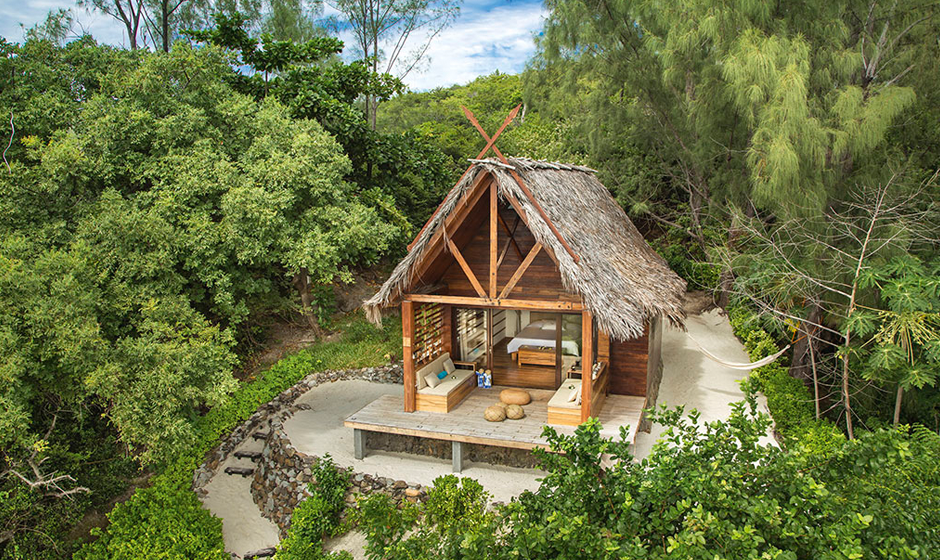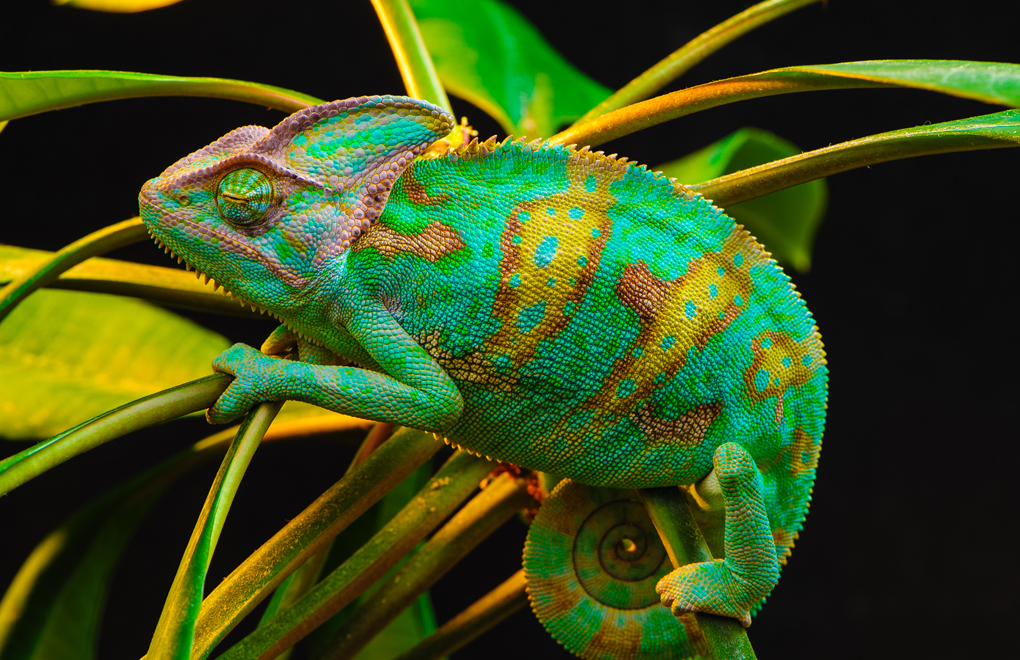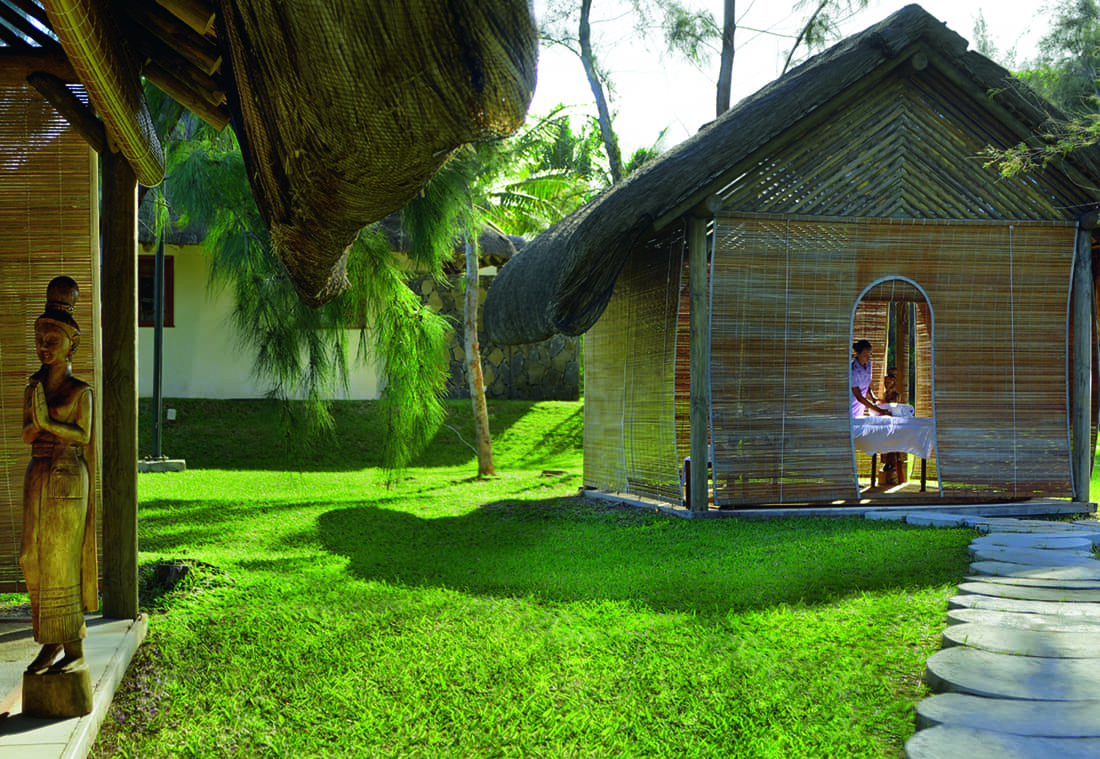For travel-hungry adventurers with a thirst for the extraordinary, Madagascar beckons like a lost world. This remote island paradise, separated from mainland Africa for millions of years, boasts landscapes untouched by time and teeming with unique wildlife.
Astonishingly, over 80% of Madagascar’s plants and animals are endemic, meaning they exist nowhere else on Earth.
Prepare to be captivated by lemurs with otherworldly calls, bizarre-looking chameleons that blend seamlessly into their surroundings, and the elusive fossa, Madagascar’s top predator.
Get ready for an unforgettable adventure encountering some of the world’s rarest creatures!
1. The lemurs of Madagascar
Undoubtedly, the island’s crown jewels are its lemurs and the top reasons to visit it. With a staggering 107 (and counting!) species, all endemic to Madagascar, these primates come in a kaleidoscope of shapes and sizes.
Scientists are still uncovering new lemur varieties, a testament to the island’s incredible biodiversity.
Some of the most well-known include:
- Ring-tailed lemur: Living in the southern and western dry forests of the island, these highly sociable creatures live in groups of up to 30 largely female dominated communities.
- Sifakas: Theses so-called ‘dancing’ lemurs are found mainly in the dry forests of the West and South. They get their nickname from their dance-like movement, as they walk on hind legs while moving their arms about.
- Dwarf lemur: These small nocturnal lemurs are found throughout Madagascar.
- Aye-Aye: Another nocturnal lemur that lives in the rainforests but is threatened by extinction due to deforestation and hunting.
- Indri: Living in the rainforests of the East coast, the Indri is the largest living lemur in the world. It has a distinct black and white coat, and an eerie sounding call.

The ring tailed lemur
2. Fossas – the endangered wild cat from Madagascar
Ruling the shadows is the fossa, Madagascar’s top predator. This elusive cat-like creature, with a lithe body and cunning demeanour, is sadly dwindling in numbers. Habitat loss due to deforestation shrinks its hunting grounds, and occasional forays into populated areas in search of prey bring it into conflict with humans.
Despite its fearsome appearance, the fossa is surprisingly adaptable and plays a vital role in maintaining the island’s ecosystem.
Sadly, the fossa faces the very real threat of extinction.
3. The birds of Madagascar
Madagascar’s skies aren’t just for lemurs! The island boasts an incredible 258 bird species, with a staggering 115 found nowhere else on Earth.
From the vibrant calls of vangas echoing through the rainforests to the comical antics of ground rollers, these feathered wonders can be spotted in parks and forests across Madagascar:
- Madagascar Lovebird: The Madagascar Lovebird is the island’s tiniest parrot species. These shy charmers are predominantly green with a splash of grey on the male’s upper body. Known for their gentle chirps and quiet nature, they are surprisingly hardy, thriving on a diet of seeds and leaves.
- Red tailed Vanga: A fiery flash of colour in the Madagascar forest canopy, the Red-tailed Vanga is a tiny dynamo. No bigger than a chickadee, this bird boasts a dazzling display of red, black, and white plumage. Unlike its flashy exterior, the Red-tailed Vanga’s song is a surprisingly simple wolf whistle.
- Collared Night Jar: Madagascar’s nocturnal symphony wouldn’t be complete without the Collared Nightjar. This master of camouflage spends its days perched motionless on forest floors, blending in perfectly with fallen leaves thanks to its intricately patterned plumage. Come nightfall, the Collared Nightjar takes flight, becoming an agile hunter of insects.
- Marsh Owl: Patrolling the grasslands and marshes of Madagascar is the Marsh Owl, a silent guardian with a watchful stare. Unlike its nocturnal brethren, Marsh Owls are surprisingly active during the day, often basking in the afternoon sun before hunting for their next meal. Their brown plumage offers excellent camouflage amidst the tall grasses, and their small ear tufts barely register.
- Sparrowhawk of Madagascar: Soaring through Madagascar’s diverse habitats, the Madagascar Sparrowhawk is a predator perfectly adapted for the hunt. This agile raptor, slightly smaller than its Eurasian cousin, boasts rusty brown feathers on its back and a barred white and grey underbelly.
- Madagascar Wood Rail: A secretive resident of Madagascar’s eastern rainforests, the Madagascar Wood Rail prefers the shadows of the dense undergrowth. This chicken-sized bird, with its rich, rufous-brown coat and a touch of grey around the face, is a master of camouflage.
- Rufous headed Ground Roller: A flash of rusty red in the leaf litter, the Rufous-headed Ground Roller is a ground-dwelling gem of Madagascar. This stocky bird, about the size of a robin, sports a vibrant rufous head and chest that contrasts beautifully with its olive-green back and buff underparts.
4. Chameleons in Madagascar
Over half of the world’s species of chameleons are found on Madagascar making it a haven for these masters of disguise. From the endangered species of Furcifer timoni to the Brookesia, the island’s tiniest chameleons measuring just over an inch long, Madagascar offers a mind-boggling diversity of these fascinating reptiles.
Imagine spotting a miniature chameleon clinging to rainforest foliage or witnessing the dazzling colour changes of a newly identified species – this unmissable attraction promises an unforgettable chameleon encounter!
Some of the smallest chameleons on the island are the Brookesia, measuring just over an inch. These tiny creatures live in the forest undergrowth across the island.
5. Amphibians in Madagascar
Madagascar boasts over 300 frog species, an astonishing 99% of which exist nowhere else on Earth. Forget toads and salamanders – here, frogs reign supreme! Prepare to be dazzled by a kaleidoscope of colours and shapes, from the vibrant tomato frog with its bright red skin to the bizarre-looking leaf frog that blends seamlessly into its surroundings.
Get ready to discover a world of incredible amphibian diversity during a hike in Madagascar:
- Mantella: The Madagascan mantella is also known as Madagascar golden frog. Shimmering like gemstones on the rainforest floor, Mantella frogs are Madagascar’s tiny marvels. These vibrantly coloured (orange, yellow, red) wonders warn predators with their toxic skin. Found on the ground or climbing trees, they’re sadly threatened by habitat loss.
- Tomato Frog: The tomato frog lives up to its name! This plump amphibian boasts a bright red, tomato-like body, making it a standout in the leaf litter. Unlike most frogs, it has small eyes and a rounded head, adding to its unique look. This Malagasy marvel spends its days tucked away in the rainforest floor, only emerging at night to hunt for insects. Despite its flashy colouring, the tomato frog isn’t poisonous – its red hue simply serves as camouflage amongst fallen leaves.
- Mantidactylus: Madagascar’s Mantidactylus frogs are a chorus of cryptic critters. Active after dark, these incredibly diverse frogs come in a range of shapes and sizes, with some boasting smooth skin and others sporting spiky bumps. Their calls, everything from chirps to whistles, fill the night-time air. Sadly, many Mantidactylus species are threatened by habitat loss, making their night-time serenades even more precious.
6. Fish of Madagascar
Teeming with life, the waters surrounding Madagascar are a hidden gem for fish enthusiasts. Compared to the island’s land-based wildlife, many marine species here haven’t achieved superstar status, but that’s precisely what makes them so fascinating.
Divers can expect a dazzling display of colours and shapes, with vibrant clownfish guarding their anemone homes and schools of shimmering sardines swirling through coral reefs.
Predators like the moray eel, with its toothy grin, add a touch of intrigue, while the graceful ballet of the humphead wrasse showcases the elegance of the underwater world.
But Madagascar’s underwater treasures go beyond the visually stunning. Over 600 species of reef fish call these waters home, and a remarkable 80% are endemic, meaning they exist nowhere else on Earth.
This includes fascinating creatures like the polka-dotted bluespotted grouper and the bizarrely-shaped leaf scorpionfish, perfectly camouflaged amongst the coral.
With such a wealth of underwater biodiversity, Madagascar promises an unforgettable encounter for fish enthusiasts of all levels.

The Scorpion Fish
Where to stay to observe the wildlife of Madagascar?
Dreaming of barefoot luxury and an escape from the ordinary? Look no further than Lodge Constance Tsarabanjina, Madagascar. This haven of tranquillity awaits, promising an unforgettable experience amidst pristine beaches and unparalleled wildlife encounters.






1 Comment
Wildlife of Madagascar | Elegance, Excellence and Extraordinary … | Vacation Guide Site
November 30, 2011 at 12:42 pm[…] the rest here: Wildlife of Madagascar | Elegance, Excellence and Extraordinary … Bookmark on Delicious Digg this post Recommend on Facebook share via Reddit Share with Stumblers […]